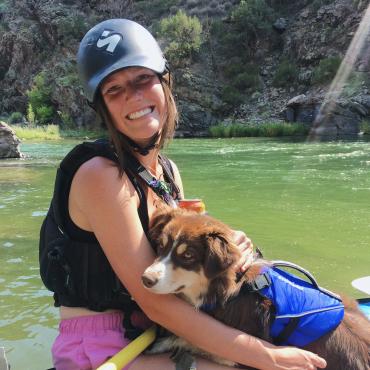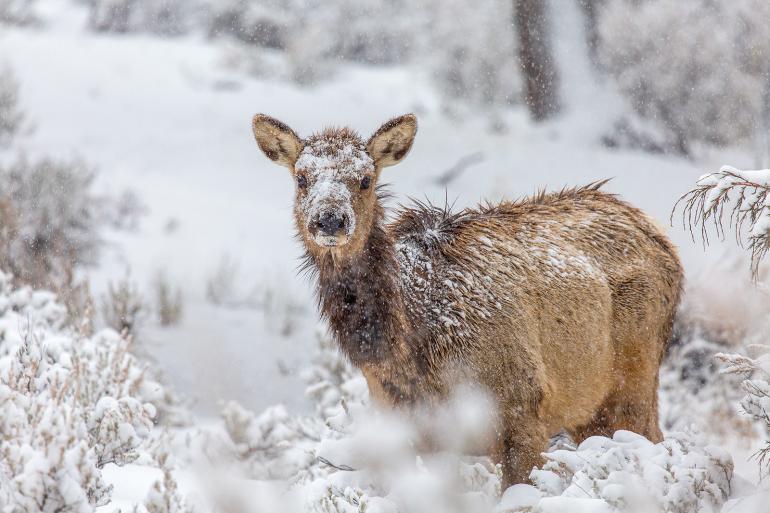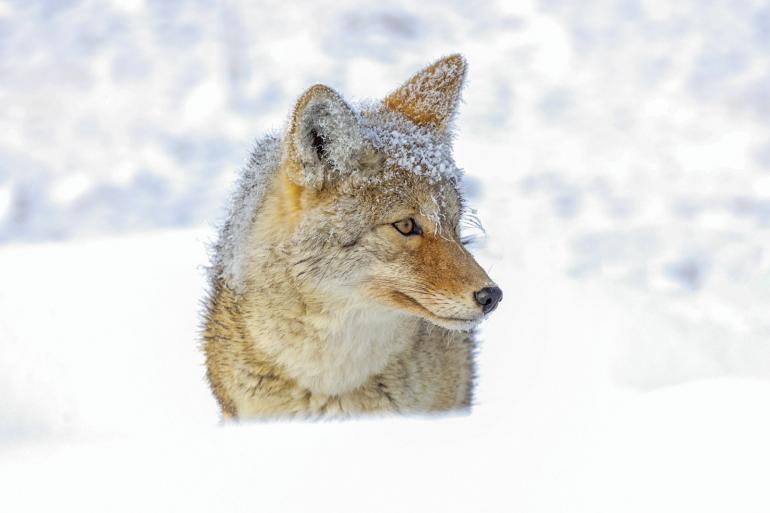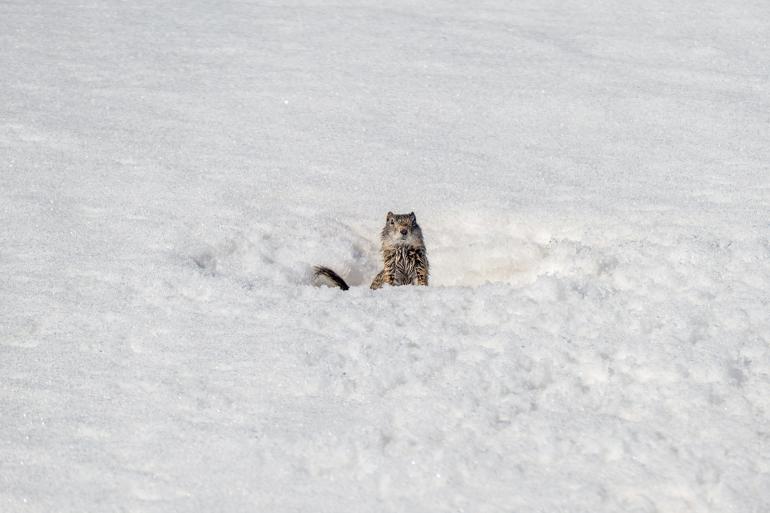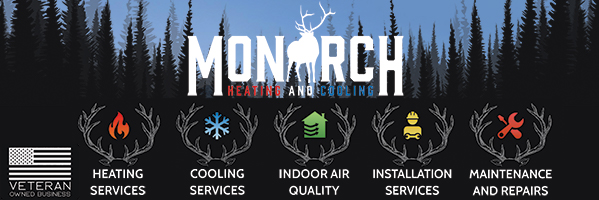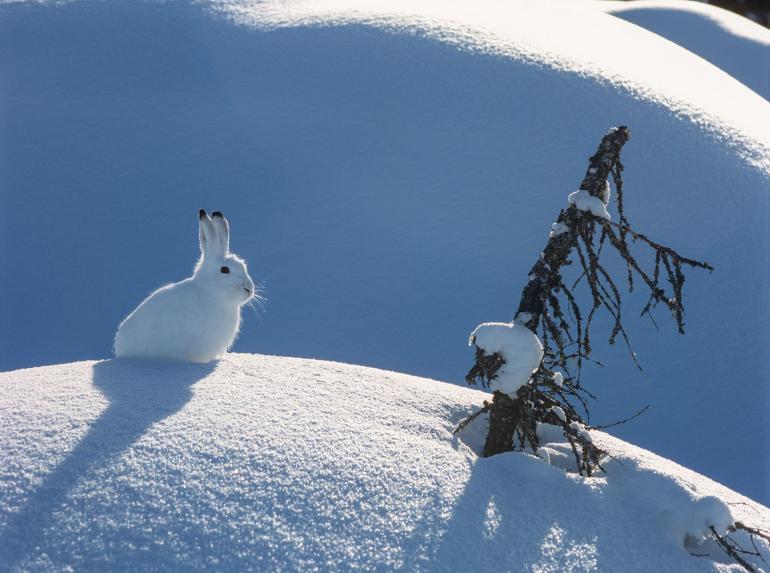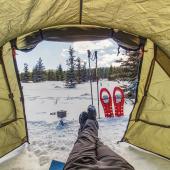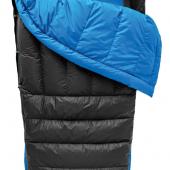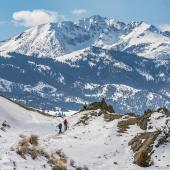The Long Haul
How animals survive the Montana winter.
In the thralls of spring and summer, Montana brims with year-round resident critters, big and small. But when the days grow shorter and the temperatures drop, sometimes well into the negatives, where do these non-migrating critters retreat to, and how do they survive?
Elk & Deer
As snow begins to fall, elk and deer move to lower elevations, settling into open valleys and foothills. Most of them gather in vast, wind-swept meadows where the snow has been blown off, leaving patches of exposed grass. Elk often rest together in tight groups, favoring sunlit, south-facing slopes. If the sun is tucked away, they retreat to dense forests where the thick canopy of conifers provides insulation. In winter, elk shed their summer coats, growing a dense, two-layered winter coat that is five times warmer and capable of withstanding temperatures as low as 40 below zero. This winter coat consists of a soft underlayer covered by long, protective guard hairs with a honeycomb-like structure. These hairs trap air, making the coat both waterproof and well-insulated, so much so that snow can accumulate on an elk’s back without melting.
Foxes & Coyotes
Like elk, foxes and coyotes endure the winter months thanks to their thick fur coats. Their diets mainly consist of voles, mice, and other small rodents, which they hunt by detecting the critters’ scents in the air of snow tunnels, or by listening for movements beneath the snow. When food becomes scarce, foxes will stash surplus prey in hidden caches to ensure they have enough to eat during lean times. Both species possess fatty pads in their paws that help prevent freezing, along with ample blood vessels that carry warmth to the paws and help maintain core body temperature.
Mice & Voles
Deer mice and meadow voles maintain their warmth by constructing intricate tunnel systems beneath the snow. The earth’s inherent heat, paired with the insulating properties of the snow cover, helps them stay relatively cozy throughout the winter months. Their diets consist of seeds, sedges, and food they’ve stored from the summer, along with additional treats they uncover as they navigate beneath the snow. During severe cold spells, deer mice may cluster together for warmth—sometimes sleeping for days—until the temperature increases, at which point they resume their active foraging.
Beavers
In winter, beavers live in ice-covered ponds formed behind their dams. The debris offers protection from cold, and the dams have underwater entrances so the beavers can store saplings in caches protected from predators. A beaver’s tail is adapted to store fat, which gradually depletes over the winter as the beaver uses up its reserves. The animal’s dense fur provides insulation against the cold, and when grooming, beavers apply oil from their anal glands to their fur, making it waterproof and allowing them to swim without soaking their skin.
Pikas
Pikas survive the winter by living under rocks in boulder fields and in alpine talus. They also use deep snow for temperature regulation—snow covers the rocks, stabilizing temperatures to about 32 degrees, regardless of the outside air temperature.
Ground Squirrels
Ground squirrels enter a near-death state known as deep hibernation. Many species hibernate fully, drastically reducing body functions to conserve energy. The ground squirrel is an extreme hibernator, reducing its breath rate from 200 breaths per minute to only one or two, while its heart rate drops from 400 beats per minute to five or six.
Bats
Bats survive winter by also entering a deep state of hibernation—where they experience a drastic drop in their heart, respiratory, and metabolic rate, enabling them to survive for long periods without food. Bats can go several minutes without breathing, and their body temperatures can fall to near-freezing. In a state known as “torpor,” bats can reduce their energy usage by 98 percent.
Frogs
Montana’s two native aquatic frog species, the northern leopard frog and the Columbia spotted frog, spend up to nine months each year hibernating beneath the ice in lakes and ponds, absorbing oxygen through their skin. Some frog species in Montana can even endure partial freezing. Both species’ livers produce glycerol—a natural antifreeze—which prevents ice crystals from forming within cells while the surrounding spaces freeze. Remarkably, the animals’ bodies can almost entirely freeze solid multiple times throughout the winter without harm.
Other Critters
While many species descend in elevation during the colder months, mountain grouse head uphill. Once snow covers their summer food sources, grouse find homes in Douglas-fir trees, where they eat conifer needles throughout the winter. Conversely, cold-blooded creatures like insects, amphibians, and snakes are among the first to enter dormancy before winter arrives, as they must find shelter before temperatures drop too low, which would slow them down. Snakes gather in communal dens, called hibernaculum, by September. These dens, often in rocky areas below the frost line, can host dozens or even hundreds of snakes.
Overall, Montana’s many animal creatures have evolved a variety of methods for getting through winter. As you go about your own activities, keep in mind that these animals might be closer than you think—they might even be directly below you.
Changing Colors
by Jamie Rankin
As the seasons change and the sun’s rays dim, our own sun-kissed skin fades. A few species of animals have fur that functions similarly.
Ermine, white-tailed ptarmigan, weasels, and snowshoe hares undergo a transformation in response to the decrease in daylight, known as photoperiodism. As daylight hours decrease in late fall, hormonal changes trigger a reduction in melanin, the pigment responsible for darker colors. As a result, the animals’ fur or feathers gradually turn white as new growth replaces the brown, old growth. In the spring, the process reverses. Longer daylight hours increase melanin production, causing brown fur or feathers to grow back. While temperature changes can influence this shift, the primary factor is the length of daylight.
The changing of fur thickness and colors offer two key benefits: a thick coat provides better insulation against the cold, and the white coloration helps animals blend into snowy surroundings. This seasonal camouflage helps them evade predators and improves their ability to hunt prey and live to see another summer.


